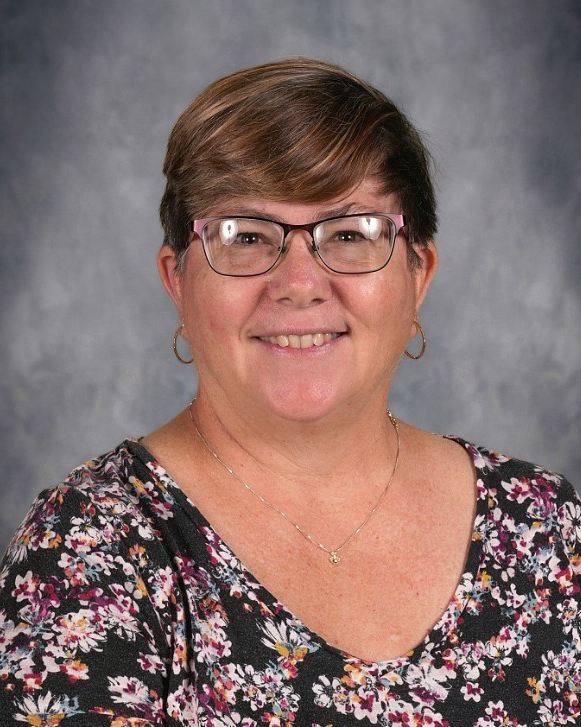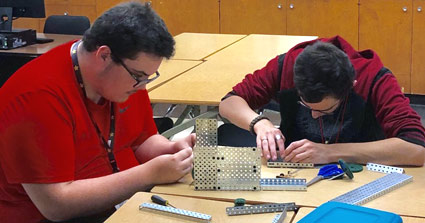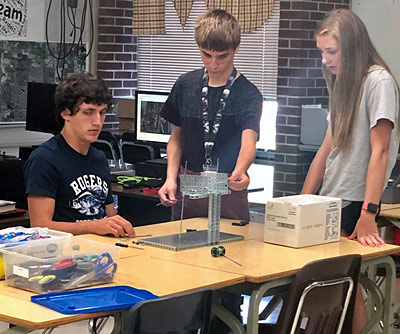Project Lead the Way (PLTW)

Sondra Sturguess, Instructor
PLTW Computer Science
660-646-3414 Ext. 20230
ssturguess@grts.org

Brandon Dennis, Instructor
PLTW Computer Science
660-646-3414 Ext. 20261
bdennis@grts.org

Denise Toole, Instructor
PLTW Engineering
660-646-3414 Ext. 20238
dtoole@chillicotheschools.org
Project Lead The Way (PLTW) is a nonprofit organization that provides a transformative learning experience for PreK-12 students and teachers across the U.S.
We create an engaging classroom environment unlike any other. PLTW empowers students to develop and apply in-demand, transportable skills by exploring real-world challenges. Through our pathways in computer science and engineering, students not only learn technical skills, but also learn to solve problems, think critically and creatively, communicate, and collaborate.
PLTW Computer Science is the foundation for most innovations today, from national security to cinematography. Computer science skills empower students to become innovators and makers of technology. Students learn to use or modify existing technologies to create new systems, uses, or technologies. Computer science teaches students how to be creative, problem solve, and reason logically. Computing is for everyone (in, everywhere and is not a standalone discipline. It is applied in every industry and field of study to drive innovation and empower problem solving.
Over the course of the PLTW Computer Science program, the focus will be on:
fostering an inclusive computing culture with emphasis on the value of diverse perspectives in development processes
collaborating around computing to foster skills used by computing professionals recognizing and defining computational problems to problems can be solved and analyzed
developing and using abstractions to help identify patterns and create generalizations to simplify a complex system and focus on the relevant tasks
creating computational artifacts that embrace both creative expression and problem solving testing and refining computational artifacts by following a deliberate and iterative process
communicating about computing by using clear communication including precise language and careful consideration of possible audiences
connecting computing by recognizing that computational thinking is conceptualizing, not programming; fundamental, not rote skill; a way that humans, not computers, think; complements and combines mathematical and engineering thinking
Learning computer science empowers young people to compete in the global economy and pursue careers across all sectors because it teaches students computational thinking practices and problem-solving skills applicable in any industry.
+ + +
The U.S. Department of Labor predicts that the fastest growing and highest paying jobs over the next decade will be computer science related. Computer scientists enjoy a wide range of career options, since all industries involve computing, including the arts, agriculture, energy, healthcare, manufacturing, security, and transportation.
PLTW Engineering teaches students that real-world problems often have multiple solutions with many pathways to achieve success. With engaging courses like that cover topics like environmental sustainability, digital electronics, civil engineering, and architecture, students will be empowered to explore possibilities, experiment, learn from failure, and turn ideas into reality.PLTW Engineering encourages students to adopt a problem-solving mindset, engaging them in compelling, real-world challenges that help them become better collaborators and thinkers.
Students dig deep into the engineering design process, applying math, science, and engineering standards to hands-on projects. They work both individually and in teams to design solutions to a variety of problems using 3-D modeling software, and use an engineering notebook to document their work. Through problems that engage and challenge, students explore a broad range of engineering topics, including mechanisms, the strength of structures and materials, and automation. Students develop skills in problem solving, research, and design while learning strategies for design process documentation, collaboration, and presentation.
Technology and engineering are pervasive in all aspects of our lives. Every human activity is dependent upon the products, systems, and processes created to help grow food, provide shelter, communicate, work, and recreate. As the world grows more complex, it is increasingly important for everyone to understand more about technology and engineering. People need to understand technology’s impacts on their lives, on society, and on the environment, as well as how to use and develop technological products, systems, and processes to extend human capabilities.
+ + +
The U.S. Bureau of Labor Statistics projects the overall employment in engineering occupations will expand by approximately 91,300 new jobs over the 2021–31 decade.






